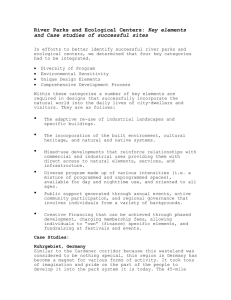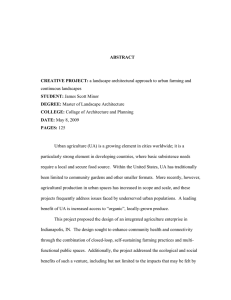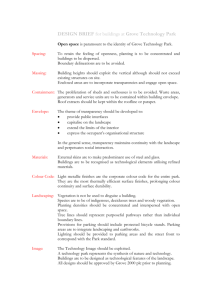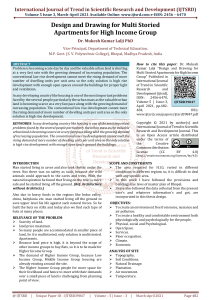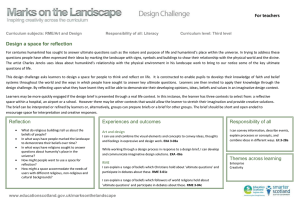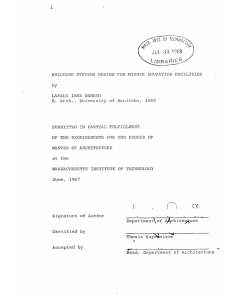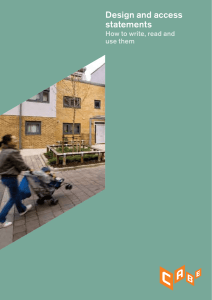Urban Design Elements
advertisement
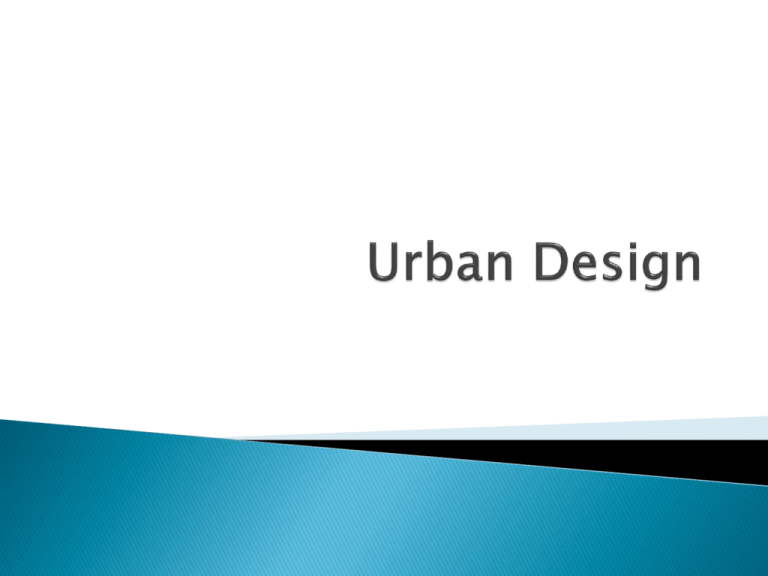
Urban design involves the arrangement and design of buildings, public spaces, transport systems, services, and amenities. Urban design is the process of giving form, shape, and character to groups of buildings, to whole neighborhoods, and the city. It is a framework that orders the elements into a network of streets, squares, and blocks. Urban design blends architecture, landscape architecture, and city planning together to make urban areas functional and attractive. Urban design is about making connections between people and places, movement and urban form, nature and the built fabric. Urban design draws together the many strands of place-making, environmental stewardship, social equity and economic viability into the creation of places with distinct beauty and identity. Urban design is derived from but transcends planning and transportation policy, architectural design, development economics, engineering and landscape. It draws these and other strands together creating a vision for an area and then deploying the resources and skills needed to bring the vision to life - - Buildings The most pronounced elements of urban design – they shape and articulate space forming the streetwalls of the city. Well-designed buildings and group of buildings work together to create a sense of place. - - Public Space Great public spaces are the living room of the city - the place where people come together to enjoy the city and each other. Public spaces make high quality life in the city possible - they form the stage and backdrop to the drama of life. - - Streets The connections between spaces and places, as well as being spaces themselves. Defined by their physical dimension and character as well as the size, scale, and character of the buildings that line them. - - - Transport Transport systems connect the parts of cities and help shape them, and enable movement throughout the city. They include road, rail, bicycle, and pedestrian networks, and together form the total movement system of a city. The balance of these various transport systems is what helps define the quality and character of cities, and makes them either friendly or hostile to pedestrians. The best cities are the ones that elevate the experience of the pedestrian while minimizing the dominance of the private automobile. - - Landscape The green part of the city that weaves throughout - in the form of urban parks, street trees, plants, flowers, and water in many forms. Landscape helps define the character and beauty of a city and creates soft, contrasting spaces and elements. This is the most prominent aspect of urban design. The following artistic principles are an integral part of creating form and spatial definition: -Order -Unity -Balance -Proportion -Scale -Hierarchy -Symmetry -Rhythm -Contrast -Context -Detail -Texture -Harmony -beauty Pedestrian zones Incorporation of nature within a city Aesthetics Urban structure – How a place is put together and how its parts relate to each other Urban typology, density and sustainability - spatial types and morphologies related to intensity of use, consumption of resources and production and maintenance of viable communities Accessibility – Providing for ease, safety and choice when moving to and through places Legibility and way-finding – Helping people to find their way around and understand how a place works Animation – Designing places to stimulate public activity Function and fit – Shaping places to support their varied intended uses Complementary mixed-uses – Locating activities to allow constructive interaction between them Character and meaning – Recognizing and valuing the differences between one place and another Order and incident – Balancing consistency and variety in the urban environment in the interests of appreciating both Continuity and change – Locating people in time and place, including respect for heritage and support for contemporary culture Civil society – Making places where people are free to encounter each other as civic equals, an important component in building social capital According to Kevin Lynch, there are five basic elements or skeletal framework, which people use to construct their mental image of a city. The following are: Pathways – major and minor routes of circulation which people use to move about principally on foot Districts – component neighborhoods consisting of the center, uptown, midtown, in-town residential areas Edges – termination of a district which may not be distinct but may blend into another district or joined together to form a seam Landmarks – prominent visual-features of the city which may be large or small, and may help people identify an area or orient themselves Nodes – a center of public activity which may also be considered as a landmark except for its being a district hub of activity
